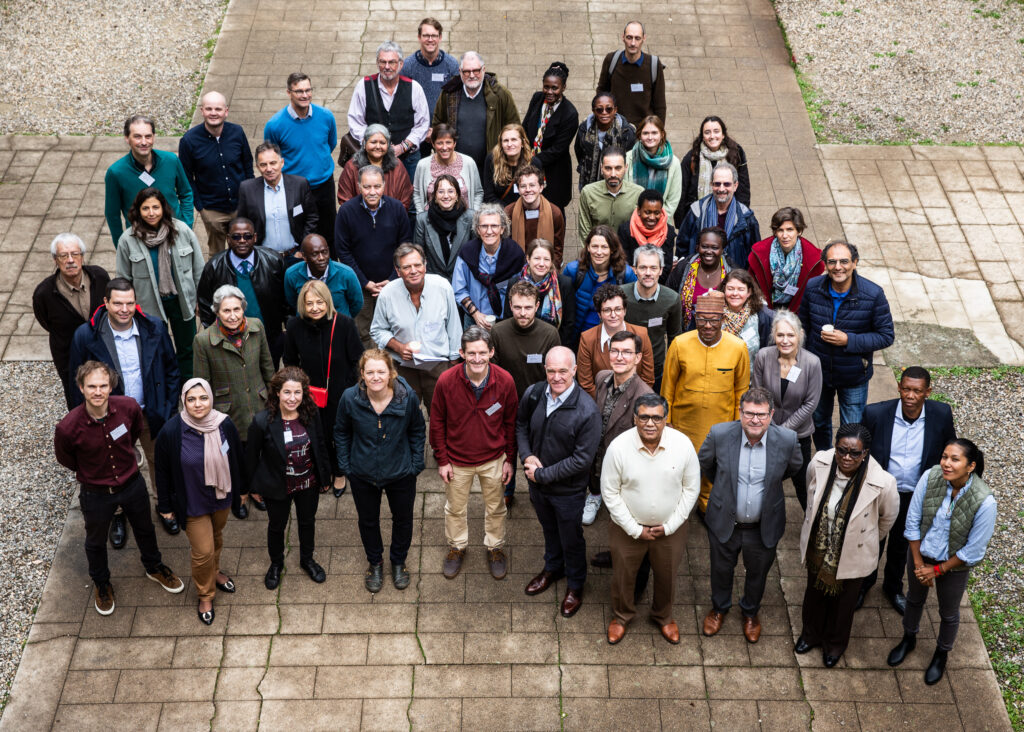By Herman Brouwer, WUR lead for FoSTr and Wangeci Gitata-Kiriga, FoSTr Country Facilitator Kenya
How can foresight transform the lives of pastoralists, fishers, and farmers in Marsabit County, Kenya? Marsabit County faces formidable challenges, with the escalating impacts of climate change threatening its food systems and livelihoods. Despite decades of significant support from development partners and government initiatives, the tangible results remain limited. This begs the critical question, inspired by David Peter Stroh: Why, despite our collective best efforts, have we struggled to foster lasting, positive change in Marsabit’s food systems?
Foresight could hold the key. By enabling stakeholders to anticipate future challenges, identify sustainable solutions, and adapt to evolving realities, foresight offers a transformative approach to addressing the county’s persistent issues. It’s time to rethink strategies and align efforts to create meaningful, long-term change for Marsabit’s pastoralists, fisherfolk, and farmers.
We brought stakeholders together in December 2024 to explore the above question, and to make a start to imagine different futures for the food system in Marsabit. Naturally, this involved a highly interactive discussion on the current food system and how we got to this situation – using a data walk with up-to-date data and analysis, as well as system maps. This provided the basis to jointly understand the dynamics of how food systems change (or resist change) and imagine how the food system could change even further in the next 10-15 years. The stories that participants came up with, based on their lived experiences in four distinct sub-counties of Marsabit, evolved into four scenarios. We used one of these scenarios (the ‘ideal one’ called Ajako, meaning ‘paradise’ in the Borana language) to create a vision for the future. We then identified the initial pathways and building blocks required to work towards this Ajako scenario.
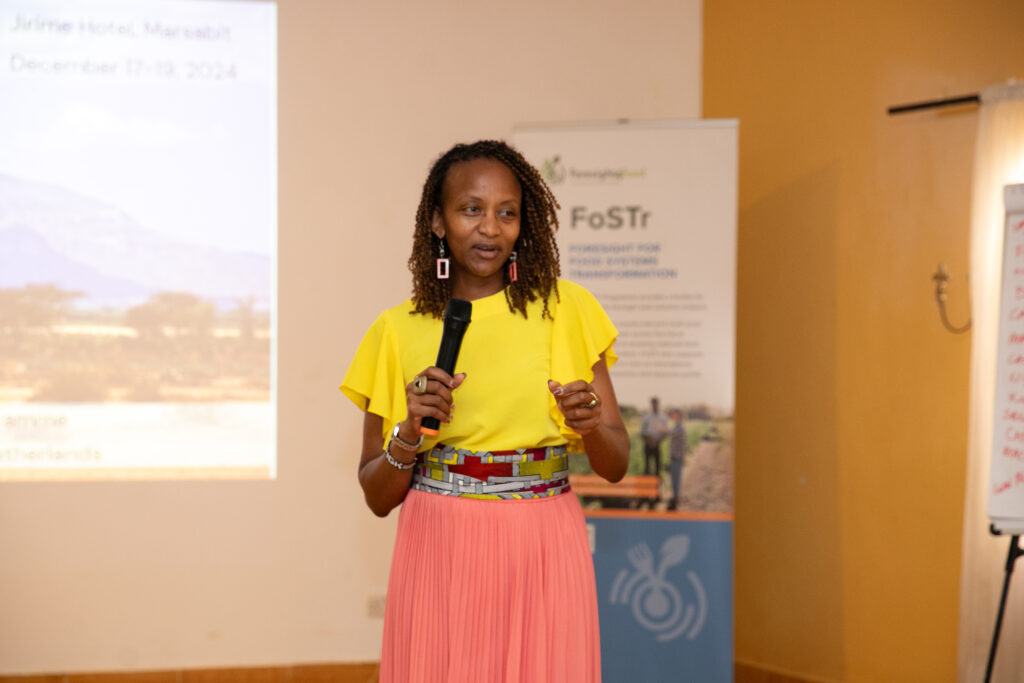

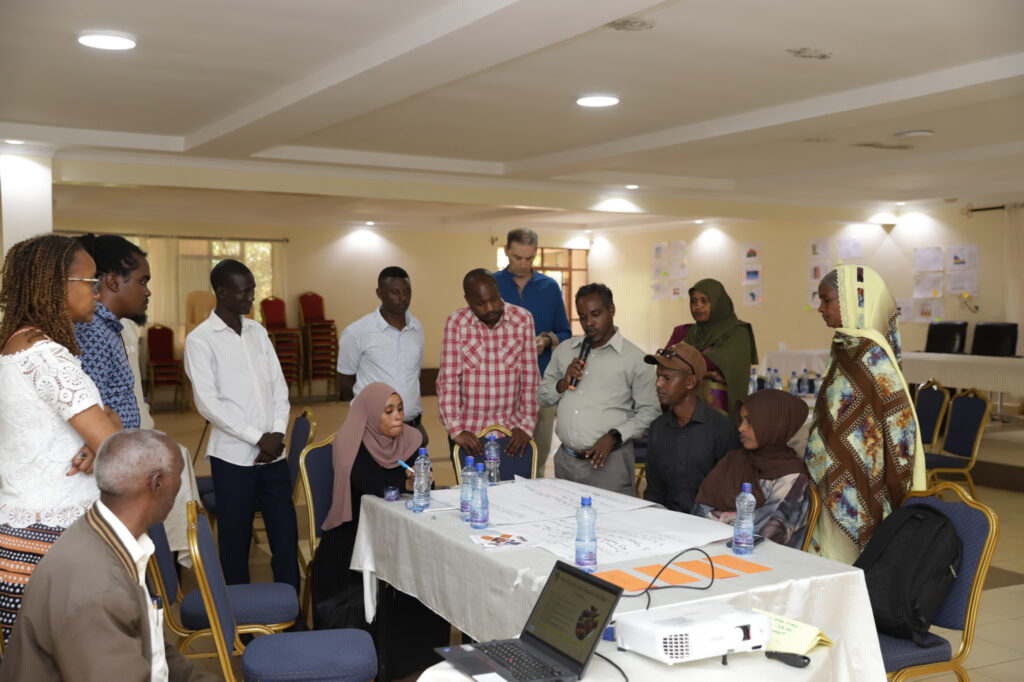
Photo credit: Crispaus Onkoba/SID, used with permission
That’s the summary of where we ended up. However, an essential detail was omitted earlier: How do you ensure the right individuals and institutions are in the room? Achieving this required a carefully planned stakeholder engagement process, which began several weeks before the workshop. The process involved numerous meetings with individual stakeholders across the county to understand who was doing what, who was most invested, what had been successful, and what hadn’t worked in the past. The ultimate goal was to mobilize the most relevant and diverse stakeholders for the 3-day workshop.
We started by engaging the county leadership, relevant government departments, and development partners. But stakeholder mobilization didn’t stop there. We actively sought out voices often overlooked in food systems discussions: faith-based organizations, community groups, and private sector representatives.
Following the workshop, we ensured the initial excitement and momentum were sustained by maintaining contact with key participants. This effort culminated in the formation of a County Development Group, coordinated by the county government. This group brings together all actors actively engaged in food security initiatives, creating a collaborative platform for sustained impact.
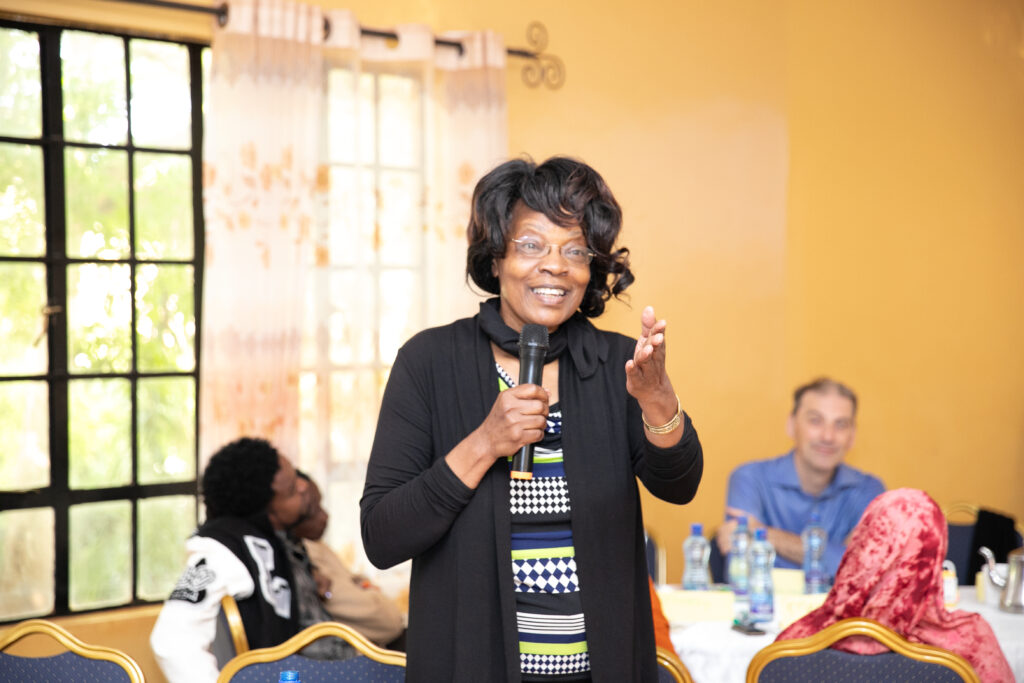
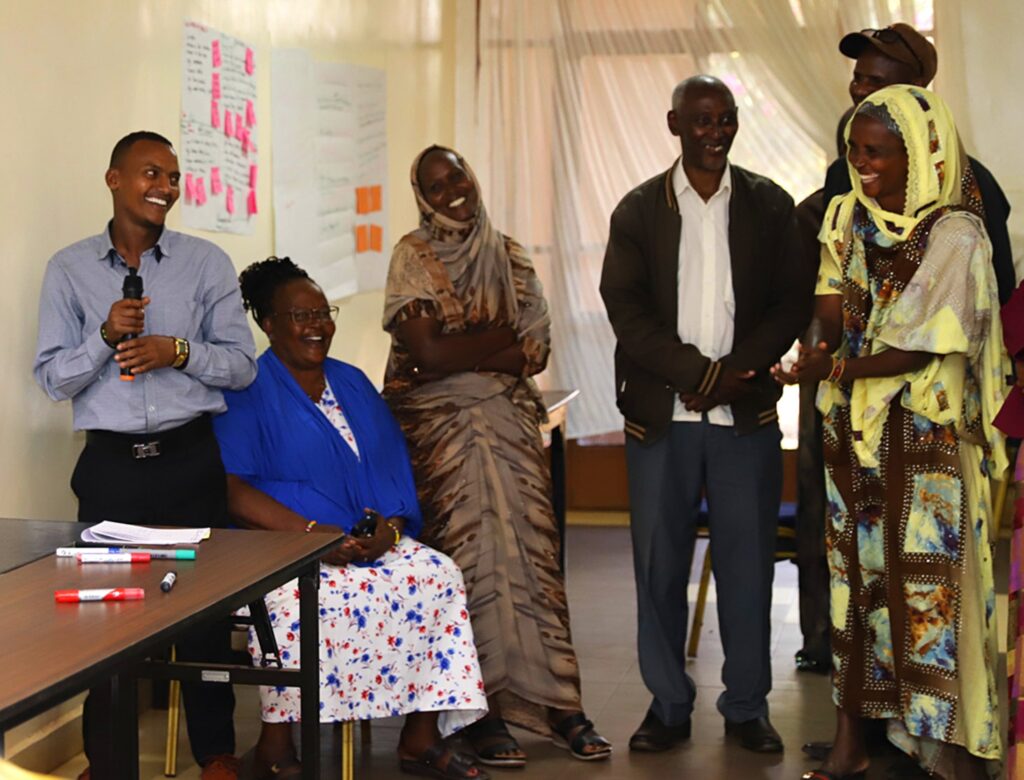
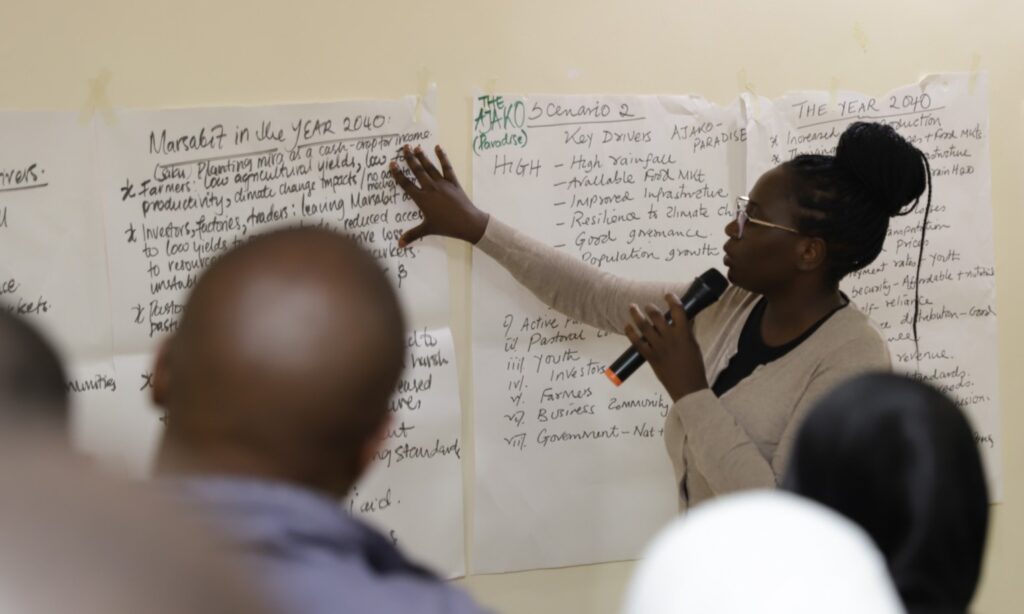
Photo credit: Crispaus Onkoba/SID, used with permission
We argue that the investment in stakeholder engagement has been the most valuable ingredient of the foresight process so far. It has allowed our Kenya foresight team to obtain the right endorsements and buy-in at the right levels. Without getting the engagement process right, all participatory foresight tools, and supportive analytics, are at risk of falling flat.
There is a case to be made to only report on foresight processes after they are concluded, rather than at the start. This blog is an exception, to make the point that how you start matters.
The FoSTr Kenya foresight team, consisting of Results for Africa Initiative (RAI); Society for International Development (SID); International Livestock Research Institute (ILRI); University of Nairobi; Food and Land Use Coalition (FOLU); Wageningen University & Research (WUR); and the University of Oxford, will continue to support the County Development Group in Marsabit to coordinate actions of state and non-state actors towards achieving Ajako by 2040. A similar process is taking place in Nakuru County. Both have active linkages to Kenya’s national food system science-policy interfaces.
By Bram Peters
The Foresight4Food FoSTr team has just returned from an active and productive trip to Kenya, despite the challenging political situation in the country. From our perspective, this highlights the need to adapt to turbulence and to use foresight to build resilience for Kenya’s food system.
From June 19 to 26, together with my team members including Jim Woodhill, Herman Brouwer, and Wangeci Gitata-Kiriga we conducted a range of food systems foresight workshops in Nairobi and Nakuru with a wide range of national food systems stakeholders. Here is a brief update on the action.
Navigating turbulence
On the morning of June 19, Foresight4Food, together with partners ILRI–CGIAR, Results for Africa Initiative and University of Nairobi, organised two sessions in Nairobi. The interactive breakfast session was all about ‘Navigating agri-business in turbulent futures’. The session was co-hosted by IFAD Kenya and was attended by a range of private sector associations, business support services, innovation facilitators and impact investors.

The focus of the meeting was to introduce the topic of foresight in relation to agribusiness in Kenya, share some of the scenarios that were developed in the context of Nakuru, and discuss the implications of different futures of the food system. Participants were shown five different scenarios of how the food system might look in 2040 in Nakuru and were invited to think through and discuss the implications of these scenarios.
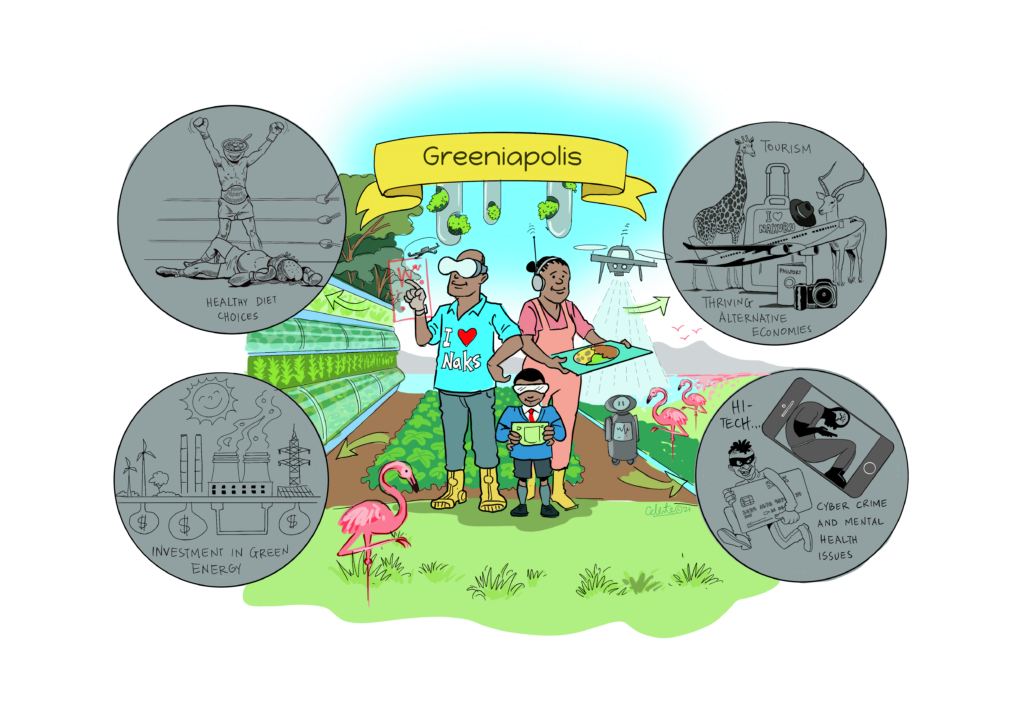
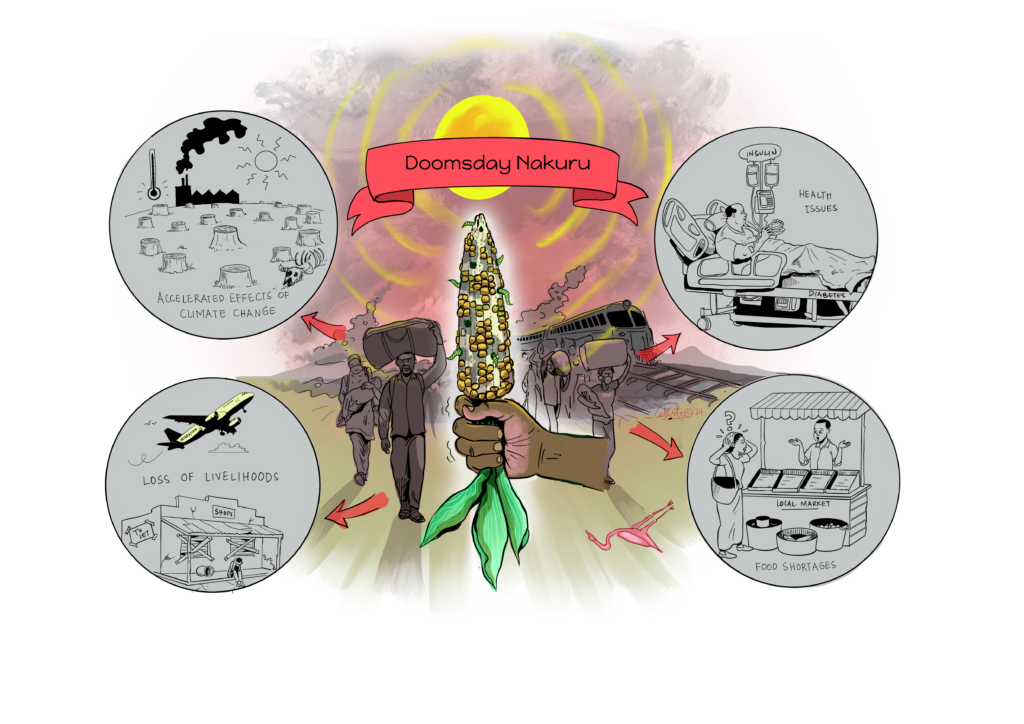
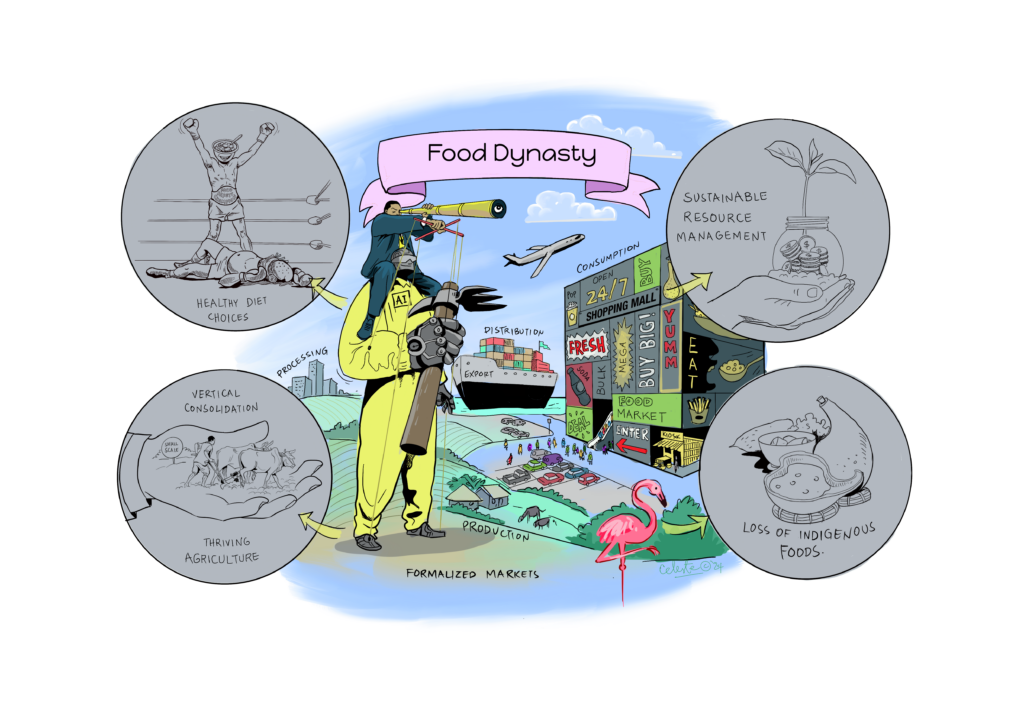
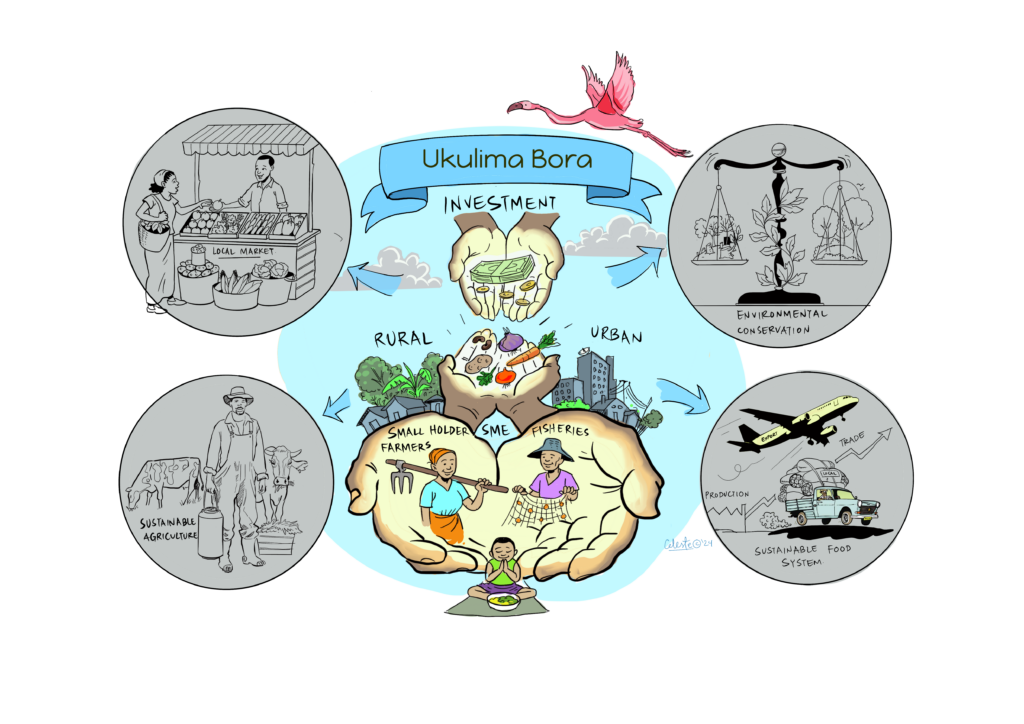

With a strong presence and involvement of leaders from various private sector associations such as the Agriculture Sector Network (ASNET) of the Kenya Private Sector Alliance, the discussion invited stakeholders to reflect not only on trends and uncertainties emerging in Kenya, but also how their own businesses are preparing for the future.
Supporting the pathways for food system transformation
In the afternoon of June 19, the FoSTr team organised a national update session on the progress of FoSTr since June 2023. The session was attended by many individuals from the morning session, as well as representatives from government, civil society and research organisations. The FoSTr team presented the latest updates, including the launch of a ‘Kenya Food Systems Mapping Report’, and with a collection of scenarios for the Nakuru food system.
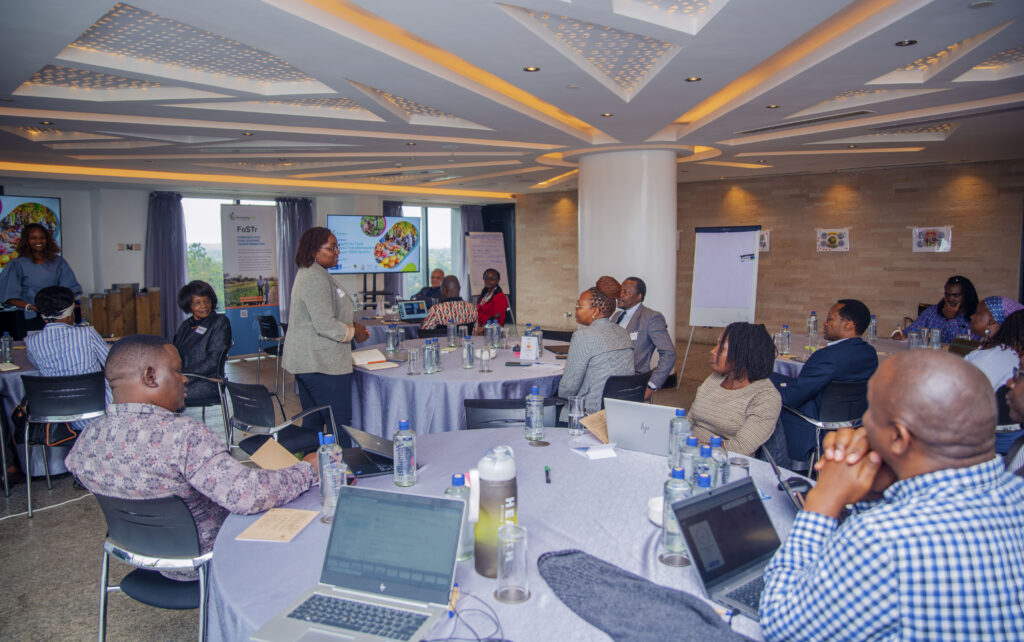
With a special presentation by the Ministry of Agriculture and the Food Systems Technical Working Group and special remarks from IFAD on the 3FS tool, it was discussed how a wide range of ecosystem support initiatives are buttressing the national food systems transformation pathways in Kenya. The approach by Foresight4Food to engage with two counties, Nakuru and Marsabit, and to build on Bottom-up initiatives showed how our approach complements the ongoing national-level initiatives.
Systemic Theory of Change
From June 19 to 21, the Foresight4Food FoSTr team facilitated a 3-day workshop for the inception phase of the new Netherlands-funded, World Food Programme and UNESCO on ‘Sustainably Unlocking the Potential of Lake Turkana. Stakeholder representatives from the Lake Turkana region (both on the Marsabit and Turkana sides of the lake) gathered in Nairobi to engage in a shared analysis of the complex food system and co-create the high-level focus of the programme.
The Turkana Lake food system is highly complex, with high food insecurity, vulnerability to climate change and conflict, and many cultural dynamics around pastoralist and fisheries livelihoods. Finding market opportunities and strengthening resilience is not easy, and requires a different way of working. Using the Foresight4Food approach, and building on 6 scenarios that were developed in previous workshops in Marsabit and Turkana, stakeholders explored what might need to be done to understand systemic risks and how lasting opportunities can be triggered.
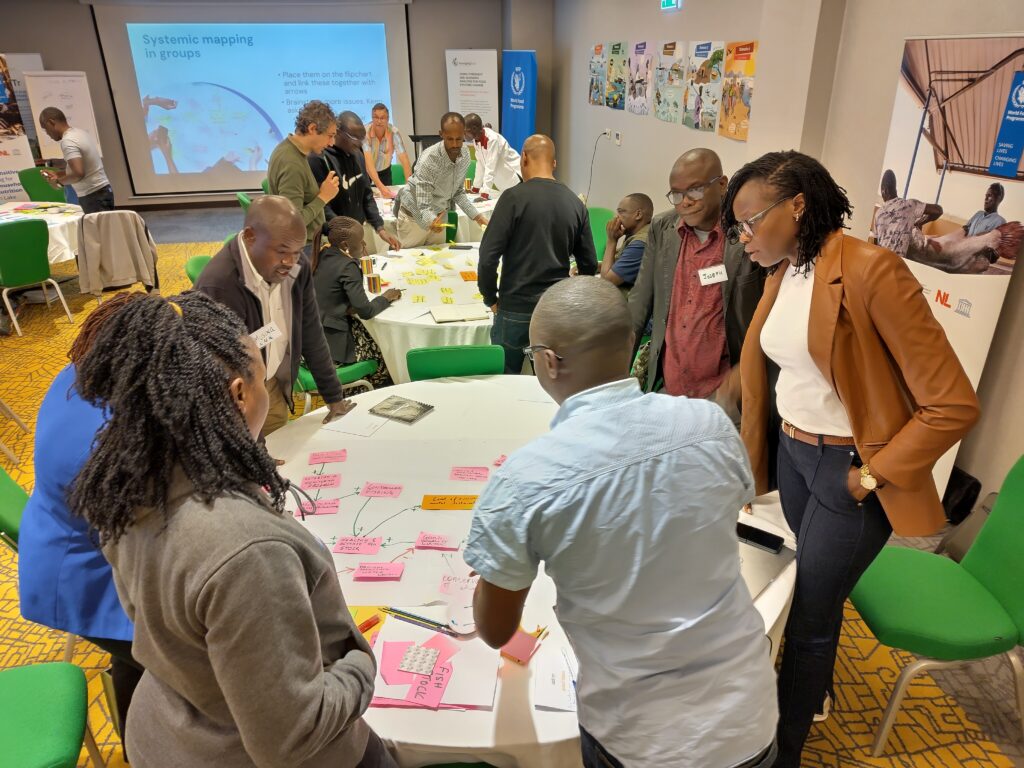
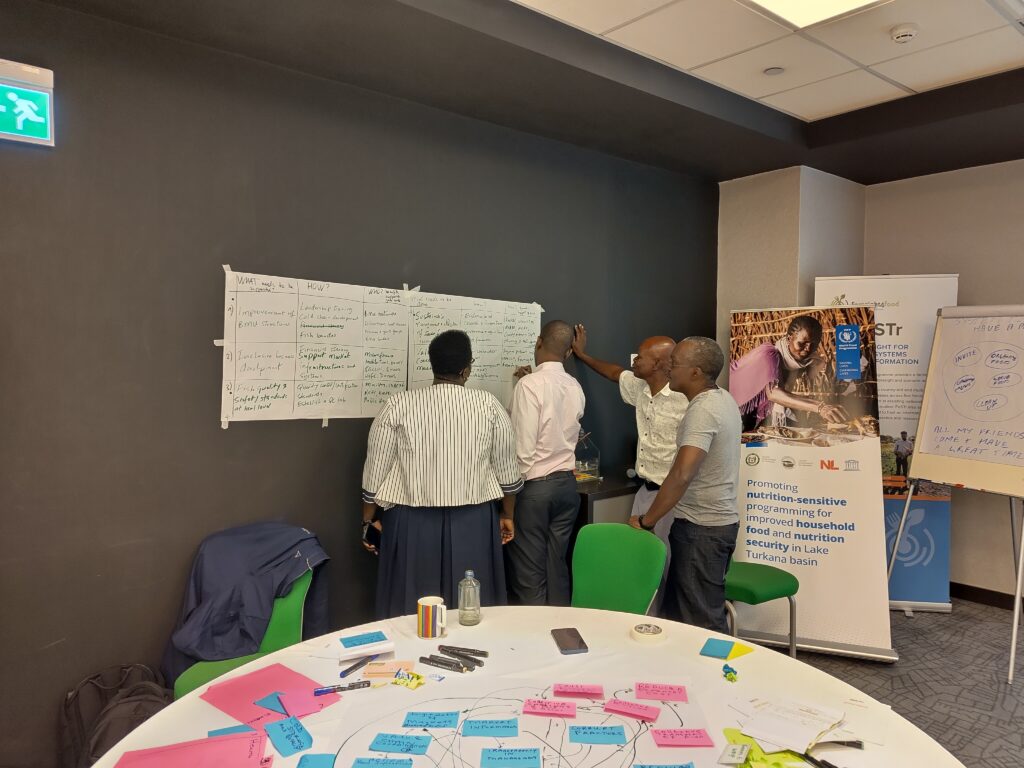
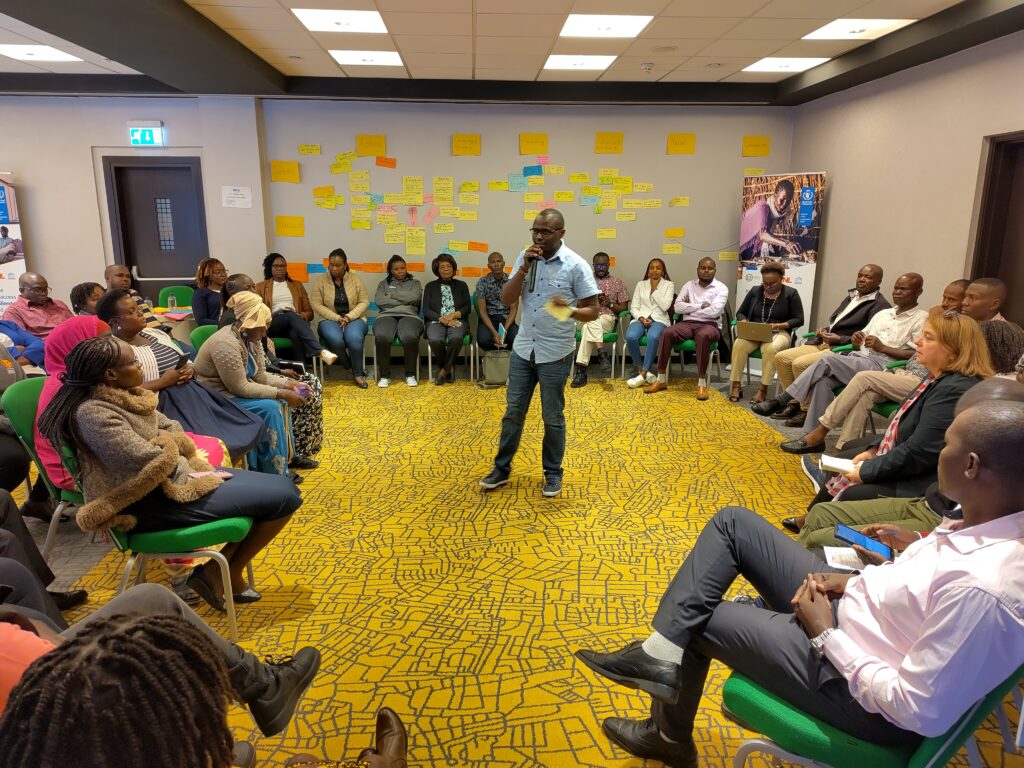
Preparing a Systemic ToC is all about analysing the context, articulating the transformations needed in light of various future scenarios, and developing the building blocks for action. The building blocks include pathways, processes and partnerships. Through many interactive discussions and exercises, the stakeholders conducted value chain mapping of the fish value chain, CATWOVE for articulating systemic change narratives, and Causal Loop Mapping.
Manifesto for Change for the Nakuru Food System
On June 24 and 25, the FoSTr team including partners ILRI-CGIAR, Results for Africa Initiative and University of Nairobi once again visited Nakuru, now to explore systemic change pathways. As we already noted from previous workshops, the food system of Nakuru County is full of potential, as Nakuru’s natural resources are rich and a wide range of agricultural value chains are represented. However, challenges related to food and nutrition security and environmental sustainability exist. Trends of climate change, unhealthy diets and land fragmentation are appearing. The future holds many uncertainties. In order to future-proof the food system, it is urgent that investments are made to further enhance the resilience and sustainability of food and agriculture in Nakuru.
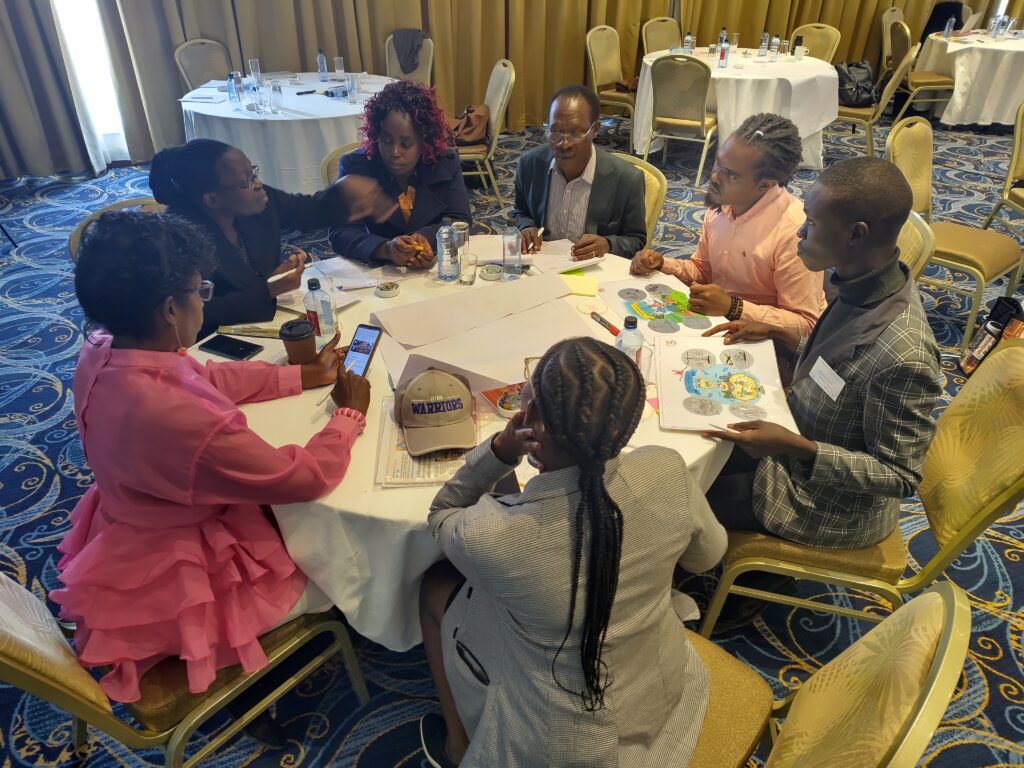
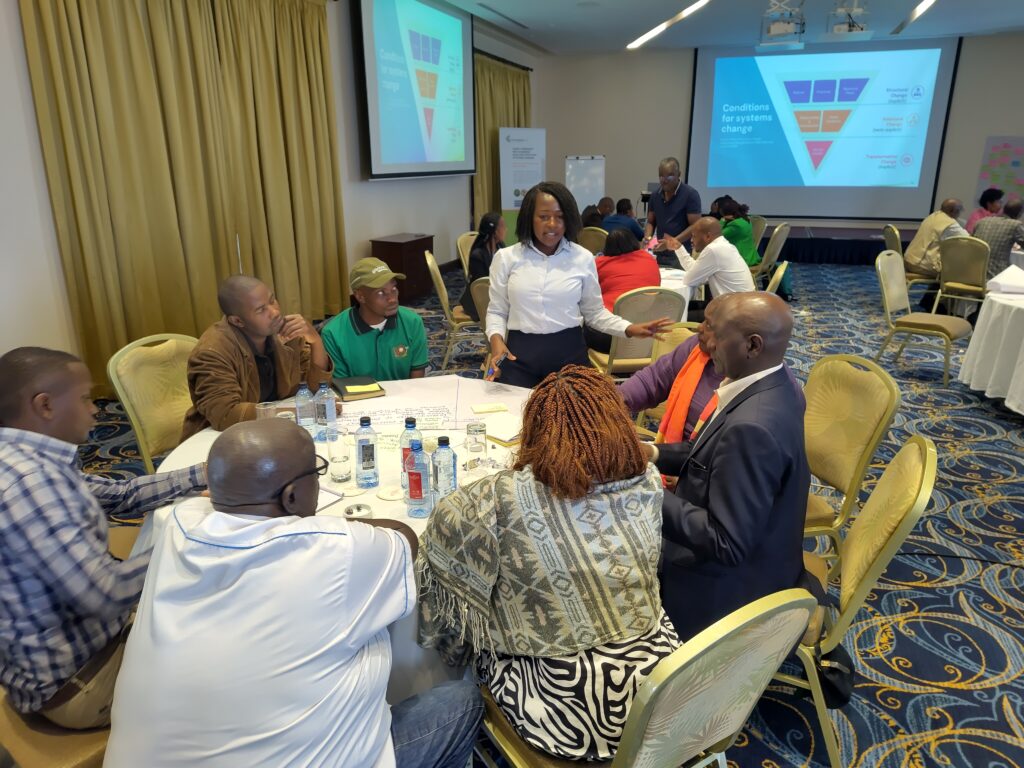

Since November 2023, a diverse group of more than 40 different stakeholders from Nakuru county have been coming together to consider the future of food system, supported by researchers and facilitators of Foresight4Food. This inclusive group looked at the challenges and opportunities for food and agriculture today and how they might evolve in 10-15 years. Food system analysis, an assessment of drivers and trends relevant to Nakuru, and 5 scenarios were developed by this group.
During these two days, stakeholders from Nakuru engaged in scenario interpretation and Causal Loop diagramming to come up with key pathways to kickstart food system transformation in Nakuru. These outputs culminated in a Manifesto for Change: a vision for the desired future for Nakuru’s food system and a range of possible pathways that can set us in that direction, while preparing us for a range of uncertainties. The Manifesto calls upon all stakeholders to join and align their actions, and intensify collaboration to transform Nakuru’s food system so that it can feed its people nutritiously; advance economic development; restore balance with nature; grow in-county revenue and eventually GDP growth for Kenya.
The preparations for the 4th Global Foresight4Food Workshop are well underway. A diverse group of participants are expected to join and use this opportunity to share their ideas and insights as well as connect with a growing community of foresight practitioners. In regard to this, we asked Dr. Rathana Peou Norbert-Munns, Sustainable Development, Agrifood System Policies and Climate Foresight Planning Specialist at FAO and a valuable member of the Foresight4Food steering group to share some thoughts and her expectations from the workshop.
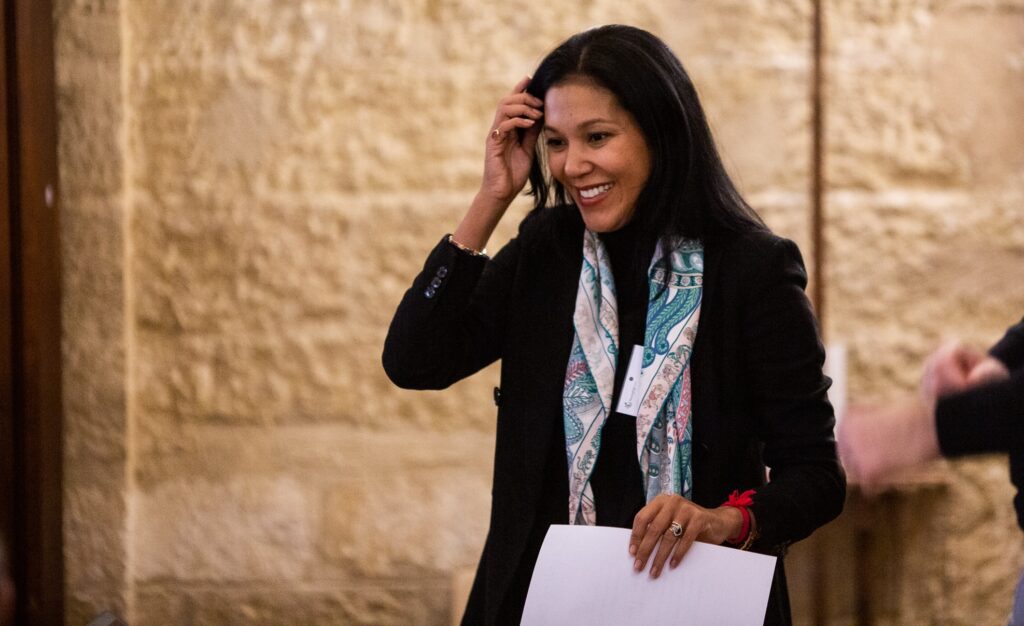
The biggest challenge our world is facing that keeps me up at night…
If I had to pinpoint the most significant challenge, it would undoubtedly be climate change. However, as a foresight planning specialist, I’d say that a forward-thinking planning approach helps various stakeholders recognize not only the widely acknowledged issues but also those that are just beginning to emerge, the so-called early signals. These insights enable us to map out risks across multiple time horizons and envision plausible futures and encourage us to rethink our current actions and adopt innovative approaches which are urgently need it. Ultimately, while these concerns sometime disrupt my sleep, it definitely fuels my daily actions with a clear, long-term vision for sustainable change.
What I look forward to in the 4th Global Foresight4Food workshop
My expectations are set high to leverage the tool of Foresight for Food System Transformation effectively. In a global polycrisis, there is a pressing need for innovative and strategic thinking to guide decisions that ensure sustainable food systems.
This year’s theme of the Foresight4Food Global Workshop captures the essence of what we aim to achieve: a shift in how we envision and shape the future of food systems. It promises to be a crucial platform for sharing insights, fostering collaborative efforts, and enhancing the capabilities of practitioners through knowledge exchange and community building. It is an opportunity to connect with a diverse network of experts and stakeholders, all driven by the common goal of transforming food systems for a better future. By creating a safe space for discussion and reflection, the workshop will challenge us to consider innovative accelerators for our work and identify necessary changes in our approaches.
“This year’s theme of the Foresight4Food Global Workshop captures the essence of what we aim to achieve: a shift in how we envision and shape the future of food systems.”
The workshop will also allow us to critically assess vested interests within the food systems, ensuring that our solutions are inclusive and equitable, truly embodying the principle of leaving no one behind.
On a personal level, I expect that the insights I’ll gain from the workshop will be integral to refining approaches developed for key programs in the Asia Pacific region. By learning the latest foresight methodologies and emerging trends, I aim to reflect with an increasing community of practitioners and find avenue to collaborate more effectively with stakeholders to implement resilient and sustainable food policies and practices.
Some ways to make the workshop more effective, my two cents
To ensure the workshop has a lasting impact on cross-sector collaborations and actions towards food system transformation, Foresight4Food must foster an environment of honesty where participants feel secure in openly sharing both challenges and innovative ideas. Encouraging creative and bold thinking is essential, as it will drive the development of groundbreaking strategies that transcend traditional sector boundaries and catalyze meaningful changes through transformative foresight.
By Zoë Barois
To support the lasting and valuable development of any multi-stakeholder network, it is important to explore its perceived values and positioning from the perspective of various key and transdisciplinary stakeholders. In line with this concept, five members from the Advanced Masters International Development (AMID) Programme at Radboud University including Emma John, Guusje Dijkstra, Meg van Grinsven, Nadia Rinaldi, and Zoë Barois, collaborated to explore stakeholder perceptions on the perceived values of the Foresight4Food Initiative and the risks it faces when participating in multi-stakeholder networks.
The team conducted seven interviews with foresight experts and practitioners from private, governmental, research, and multilateral organizations, in addition to experts in multi-stakeholder partnerships. Some interesting findings came up in the interviews that led to the development of several guidelines.
Perceived Values of Foresight4Food
The interview participants appreciated that the Foresight4Food Initiative connects stakeholders to (new) players in the field and enables their work to be critically examined by specialists. Being able to harness expertise in the field of foresight and apply this to food system transformation was highlighted to facilitate a deeper understanding of the suitability of foresight tools in diverse contexts.
Additionally, the interviewees highlighted Foresight4Food’s unique value is that it is one of the few initiatives working on food system transformation on a global level, as opposed to most initiatives that focus on national or regional scopes.
Foresight4Food’s deliberate focus on the processes (rather than the product) of forecasting future scenarios was emphasized as a value in itself as it is a strategic tool for food systems transformation.

An interviewee highlighted the benefit of Foresight4Food’s open-access resource platform and their ability to provide a neutral meeting space that facilitates cross-learning and a deeper understanding of foresight and food system trends among stakeholders.
“…we see it [Foresight4Food] as a great forum to exchange learning, for example, we just took the exploratory scenario planning process and customized it for use with multi-stakeholder partnerships… this is a tool that already existed that we kind of adapted and would love to share how that works so other people can pick that up…’’ – Foresight Practitioner
Risks Faced by Foresight4Food: Positionality & Durability
During the multi-stakeholder interviews, several thematic risks emerged relating to Foresight4Food’s durability and positionality within the active foresight landscape.
The long-term thinking required to envision the outcomes of Foresight4Food poses challenges in terms of sustainability as this makes it difficult for organizations to invest in the initiative due to investors’ often short-term vision and the need to “show results as quickly as possible” – Foresight Expert — a common challenge faced by many organizations in the development sector.
In relation to Foresight4Food’s positionality, the initiative faces the risk of being duplicated by similar organizations and, consequently, being “squeezed out by the big players if they feel that we are an irritant on the side of what they consider to be their patch” – Foresight Expert
Lastly, Foresight4Food faces the risk of not being “democratised enough and sublevel enough” to truly get involved with the root causes of the food system issues. This stems from the current engagement of true experts in the field and thus emerges as an ‘’elite network’’ initiated by two high-profile universities. This lack of inclusivity is further emphasized by interviewees “not capable of being inclusive we are going to fail giving to those that actually can benefit the most from our work” – Foresight expert
Subsequently, one of the main challenges of F4F is effective outreach and engagement with stakeholders.
Proposed Guidelines
Taking into account Foresight4Food’s vision and the thematic risks which emerged from the multi-stakeholder interviews, several guidelines were generated aiming to support the sustainable and valuable development of Foresight4Food’s multi-stakeholder network.
1. Foresight4Food’s Positionality
Enhancing F4F’s positionality is crucial for the initiative to find its niche. Therefore, the following guidelines are suggested:
- Conducting a needs assessment of the current network members can enable F4F to identify and prioritize their needs.
- The outcomes from the needs assessment can provide an informed direction to perform a visioning exercise. Matchmaking between desired visions and the long-term forecast
- Continuously update the existing mapping of foresight initiatives across the food system. This can be used to perform a competitor analysis to assess the existing gaps in the foresight and food systems field and formulate associated research questions.
- Facilitating smaller partnerships amongst F4Fs members, was highly valued by an interviewee thus F4F could link initiatives conducting complementary activities identified in their foresight initiative mapping, further enhancing their value.
2. Sustainability: Foresight for Foresight4Food
To ensure Foresight4Food’s sustainability and longevity, Foresight4Food must become more attractive to investors:
- ‘Foresight for Foresight4Food’: generating potential future scenarios for F4F to clarify what outcomes and impact F4F envisions in its short- and mid-term futures.
- This can be further enhanced and formulated into concrete goals by a Monitoring, Evaluation & Learning (MEL) expert, who can contextualize F4F’s Theory of Change towards each of the five FoSTr countries, providing concrete outcomes, which are actualized for funders to grasp and support.
- Develop a funding strategy to generate a diversified funding portfolio to ensure financial flow from a variety of sources.
- Attract funding from the private sector and from philanthropy as they are harboring the most financial power within the field.
- Consider transferring core operations and leadership to stakeholders in target operational areas (i.e., the FoSTr countries). This would require creating an inclusive roadmap for phasing-out and phasing-in new or alternative network partners.
3. Inclusivity & representativeness
To make F4F more inclusive, the following recommendations are provided:
- Stakeholder Characteristics and Roles Matrix to map to identify stakeholders who are not yet on board or have a low influence within the network.
- Introduce a ‘second circle’ around the steering committee to include a diversified set of stakeholders in the decision-making processes. This second circle could include farmers, youth representatives, and/ or representatives from the five FoSTr programme focus countries.
- Generate a sense of ownership amongst second circle members through co-creation
To conclude
Foresight4Food Initiative is striving to develop and strengthen its network among foresight practitioners and different stakeholders. However, it gets challenging for any organization to work in a multi-stakeholder environment. Therefore, an exploratory look at the perceived values and positionality becomes imperative.
Foresight4Food, under its FoSTr programme is working in five countries across Africa, Asia, and the Middle East, conducting foresight orientation, stocktaking, capacity building, and exploring ways to transform the country’s food systems. Thus, making it the right time to explore sustainable positioning from a stakeholder’s perspective.
Reflections on the Third Global Foresight4Food Workshop in Montpellier 2023
By Bram Peters, Food Systems Programme Facilitator
Strike? What strike?
Amid the turbulence created by strikes in France, a diverse and committed group of people still managed to get to and from the Third Global Foresight4Food Workshop in Montpellier from 7-9 March.
Perhaps, as foresight practitioners, we should have seen it coming! You would think that foresight practitioners who make it their business to look into the future might be better at anticipating turbulence, or at least a substantial level of social upheaval.
Why go through the trouble to come anyway? Because food systems are in turbulence as well. Never has there been a more urgent need to transform food systems. More than 3.1 billion people globally do not have access to healthy diets. The impact of climate change in the form of droughts and disasters is increasing. Agri-food systems are responsible for one-third of greenhouse gas emissions. The Covid-19 pandemic and the Russia war in Ukraine have shown how integrated, yet fragile, the global food system is.
We need foresight in food systems transformation
Yet, “the greatest danger in times of turbulence is not the turbulence; it is to act with yesterday’s logic” (according to futurist Peter Drucker). That’s where foresight comes in.
We need a long-term perspective to explore alternative pathways to reach desirable or avoid undesirable food system changes.
Following from the UN Food Systems Summit in 2021, many countries are searching for ways to navigate change and develop anticipatory policy to guide them.
As such, the issue on the table was: how can the foresight community of practice offer support and relevant advice to food system stakeholders?
Creating a safe space to think, connect and engage
In Montpellier, Foresight4Food brought together a diverse group of foresight practitioners, researchers, users of foresight and implementors of food systems approaches to discuss how foresight can contribute to national level food systems transformation pathways amid all this turbulence.
The Masterclass on the 7th generated a lot of energy, a shared language, and many practical explorations of tools and methods. The main Workshop on the 8th and 9th saw interactive exchanges, presentations of valuable projects and sharing of insights.
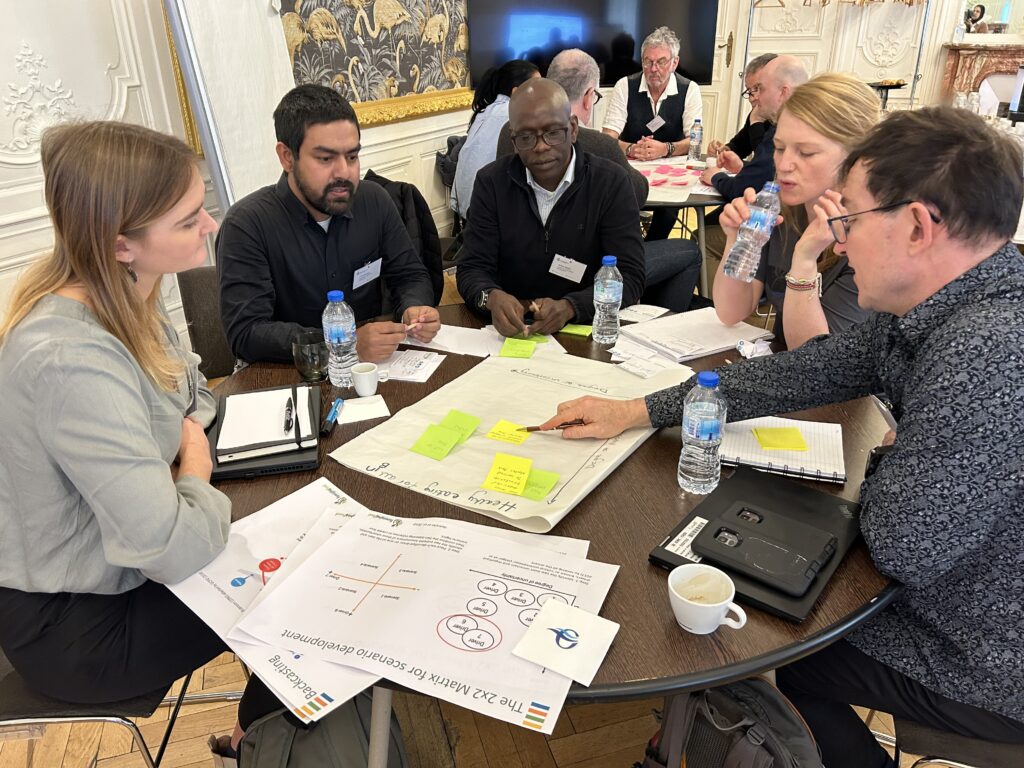
Among others, organisations such as FAO, CGIAR, GFAR and CIRAD shared ground-breaking applications of foresight thinking linked to food systems. There were cases from Asia, Africa; thematic cases on food systems data; new and past initiatives; dashboards and multi-stakeholder processes.
Researchers and data experts, such as from Wageningen University and Food and Land Use Coalition, shared innovative tools and models to advance new ways of projecting trends.
Critical perspectives were shared. Insights were brought from Africa and Asia, such as by Forum for Agricultural Research in Africa, and much more.
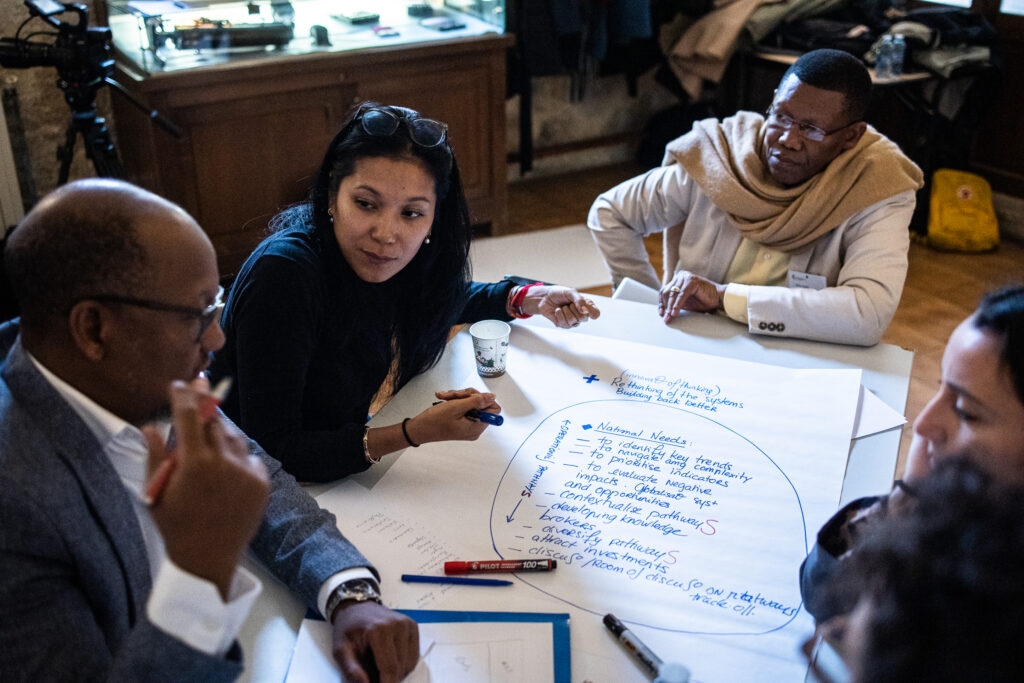
Moving the needle: developing our forward agenda
We, as Foresight4Food team, gained a lot of energy and motivation to continue fostering this vibrant network.
A few pickings of things we want explore moving forward. Develop and encourage ‘Communities of Practices’ through active partnership principles. Make a meta-analysis of existing food system foresight cases and comparative insights and lessons. Create guidance for foresight community on the process of actually doing foresight for food systems. Develop key principles for quality approaches and a toolbox to support implementation.
Thankfully, even in the face of the French strikes, a quality characteristic among foresight practitioners is the ability to be adaptable and flexible – as is needed when you work with the complexity of food systems.
